On-Orbit Polarization Calibration for Multichannel Polarimetric Camera
Abstract
:Featured Application
Abstract
1. Introduction
2. The Multichannel Polarimetric Camera and Main Polarization Elements
2.1. The Multichannel Polarimetric Camera
2.2. Main Polarization Parameters of the Polarimetric Camera
3. On-Orbit Rotating Analyzer Polarization Calibration Method for the Multichannel Polarimetric Camera
3.1. On-Orbit Rotary Analyzer Polarization Calibration Model Based on Polarization Optics Theory
3.2. New Measurement Scheme for Polarization Parameters
3.3. Polarizing Effects of the Solar Diffuser
4. Experimental Verification
4.1. Measurement for Polarization Parameters
4.2. Accuracy Verification for Polarization Calibration
5. Conclusions
Author Contributions
Funding
Acknowledgments
Conflicts of Interest
References
- Tyler, D.W.; Phenis, A.M.; Tietjen, A.B.; Virgen, M.; Mudge, J.D.; Stryjewski, J.S.; Dank, J.A. First high-resolution passive polarimetric images of boosting rocket exhaust plumes. Proc. SPIE 2009, 7461, 74610J. [Google Scholar]
- York, T. Bioinspired polarization imaging sensors: From circuits and optics to signal processing algorithms and biomedical applications. Proc. IEEE 2014, 102, 1450–1469. [Google Scholar] [CrossRef] [PubMed]
- Zhan, Y.H.; Liu, Q.; Yang, D.; Wang, Y.P. Inversion of complex refractive index for rough-surface objects. Opt. Precis. Eng. 2015, 23, 2178–2184. [Google Scholar] [CrossRef]
- Gao, S.; Gruev, V. Bilinear and bicubic interpolation methods for division of focal plane polarimeters. Opt. Express 2011, 19, 26161–26173. [Google Scholar] [CrossRef] [PubMed]
- Tyo, J.S.; Goldstein, D.L.; Chenault, D.B.; Shaw, J.A. Review of passive imaging polarimetry for remote sensing applications. Appl. Opt. 2006, 45, 5453–5469. [Google Scholar] [CrossRef] [PubMed]
- Li, S.; Jin, W.Q.; Xia, R.Q.; Li, L.; Wang, X. Radiation correction method for infrared polarization imaging system with front-mounted polarizer. Opt. Express 2016, 24, 26414–26430. [Google Scholar] [CrossRef] [PubMed]
- Ratliff, B.M.; LaCasse, C.F.; Tyo, J.S. Interpolation strategies for reducing IFOV artifacts in microgrid polarimeter imagery. Opt. Express 2009, 17, 9112–9125. [Google Scholar] [CrossRef] [PubMed]
- Yang, B.; Ju, X.P.; Yan, C.X.; Zhang, J.Q. Alignment errors calibration for a channeled spectropolarimeter. Opt. Express 2016, 24, 28923–28935. [Google Scholar] [CrossRef] [PubMed]
- Tilstra, L.G.; Stammes, P. Earth reflectance and polarization intercomparison between SCIAMACHY onboard Envisat and POLDER onboard ADEOS-2. J. Geophys. Res. 2007, 112, D11304. [Google Scholar] [CrossRef]
- Gu, X.F.; Chen, X.F.; Cheng, T.H.; Li, Z.Q.; Yu, T.; Xie, D.H.; Xu, H. In-flight polarization calibration methods of directional polarized remote sensing camera DPC. Acta Phys. Sin. 2011, 60, 070702. [Google Scholar]
- Travis, L.D. Remote sensing of aerosols with the earth observing scanning polarinieter. Proc. SPIE 1992, 1747, 154–164. [Google Scholar]
- Persh, S.; Shaham, Y.J.; Benami, O.; Cairns, B.; Mishchenko, M.I.; Hein, J.D.; Fafaul, B.A. Ground performance measurements of the glory aerosol polarimetry sensor. Proc. SPIE 2010, 7807, 780703. [Google Scholar]
- Chipman, R.A. Mueller Matrices. In Handbook of Optics; Bass, M., Ed.; McGraw-Hill: New York, NY, USA, 2009. [Google Scholar]
- Shi, S.X.; Wang, X.E.; Liu, J.S. Physical Optics and Applied Optics; Xidian University Publisher: Xi’an, China, 2008. [Google Scholar]
- Li, Z.; Li, K.; Li, L.; Xu, H.; Xie, Y.; Ma, Y.; Li, D.; Goloub, P.; Yuan, Y.; Zheng, X. Calibration of the degree of linear polarization measurements of the polarized Sun-sky radiometer based on the POLBOX system. Appl. Opt. 2018, 57, 1011–1018. [Google Scholar] [CrossRef] [PubMed]
- Chen, L.C.; Meng, F.G.; Yuan, Y.L.; Zheng, X.B. Experimental study for the polarization characteristics of airborne polarization camera. J. Optoelectron. Laser 2011, 22, 1629–1632. [Google Scholar]
- Zhang, Y.L.H.Y.; Liu, W. Polarization radiometric calibration method for multichannel polarization camera. Optik 2018, 172, 980–987. [Google Scholar]
- CODE V. Available online: http://www.opticalres.com/links/links_f.html (accessed on 31 January 2019).
- Liao, Y.B. Polarization Optics; Science Press: Beijing China, 2003; Chapter 2. [Google Scholar]
- Zhang, H.Y.; Zhang, J.Q.; Yang, B.; Yan, C.X. Calibration for Polarization Remote Detection System of Multi-linear Focal Plane Divided. Acta Opt. Sin. 2016, 36, 1128003. [Google Scholar] [CrossRef]
- Morel, O.; Seulin, R.; Fofi, D. Handy method to calibrate division-of-amplitude polarimeters for the first three Stokes parameters. Opt. Express 2016, 24, 13634–13646. [Google Scholar] [CrossRef] [PubMed]
- Stenflo, J.O.; Bianda, M.; Keller, C.U.; Solanki, S.K. Center-to-limb variation of the second solar spectrum. Astron. Astrophys. 1997, 322, 985–994. [Google Scholar]
- ASD. FieldSpec 4 Standard-Res Spectroradiometer. Available online: http://www.asdi.com/products-and-services/fieldspec-spectroradiometers/fieldspec-4-standard-res (accessed on 31 January 2019).
- Zhang, H.Y.; Li, Y.; Yan, C.X.; Zhang, J.Q. Calibration of polarized effect for time-divided polarization spectral measurement system. Opt. Precis. Eng. 2017, 25, 325–333. [Google Scholar] [CrossRef]
- Zhang, J.Q.; Xue, C.; Gao, Z.L.; Yan, C.X. Optical remote sensor for cloud and aerosol from space; past, present and future. Chin. Opt. 2015, 8, 679–698. [Google Scholar] [CrossRef]


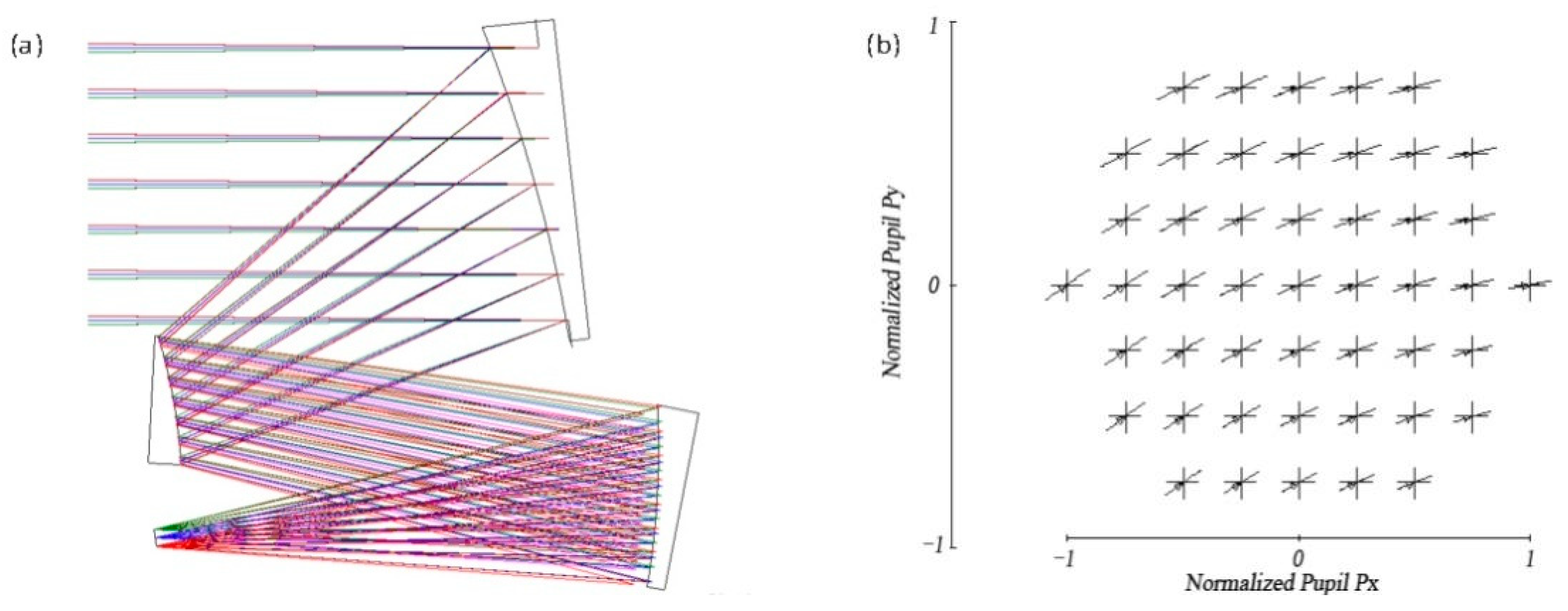


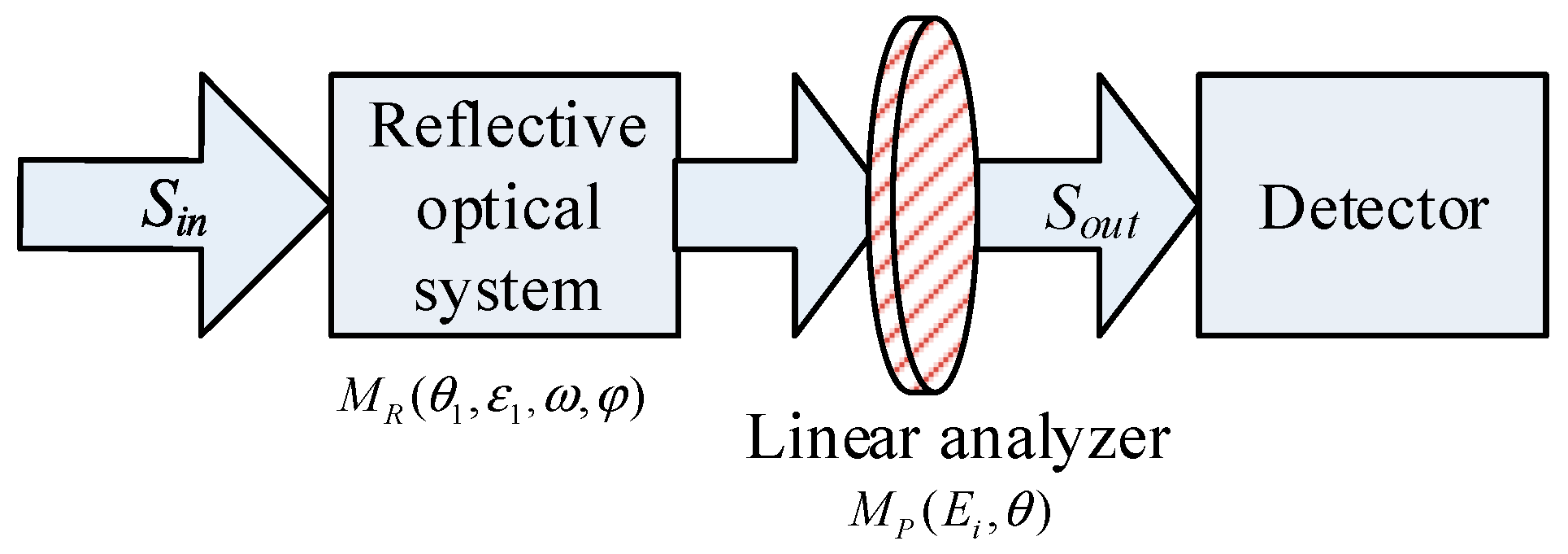

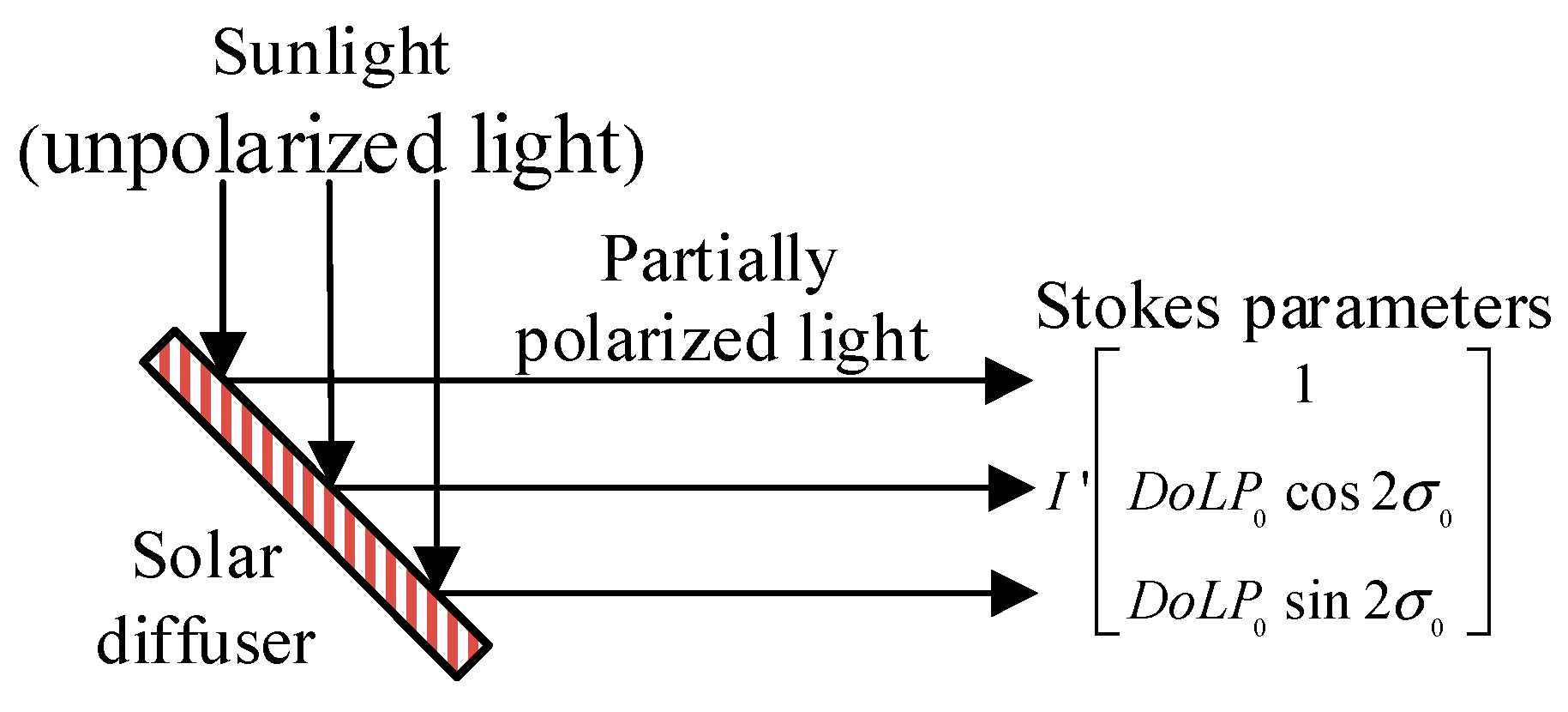
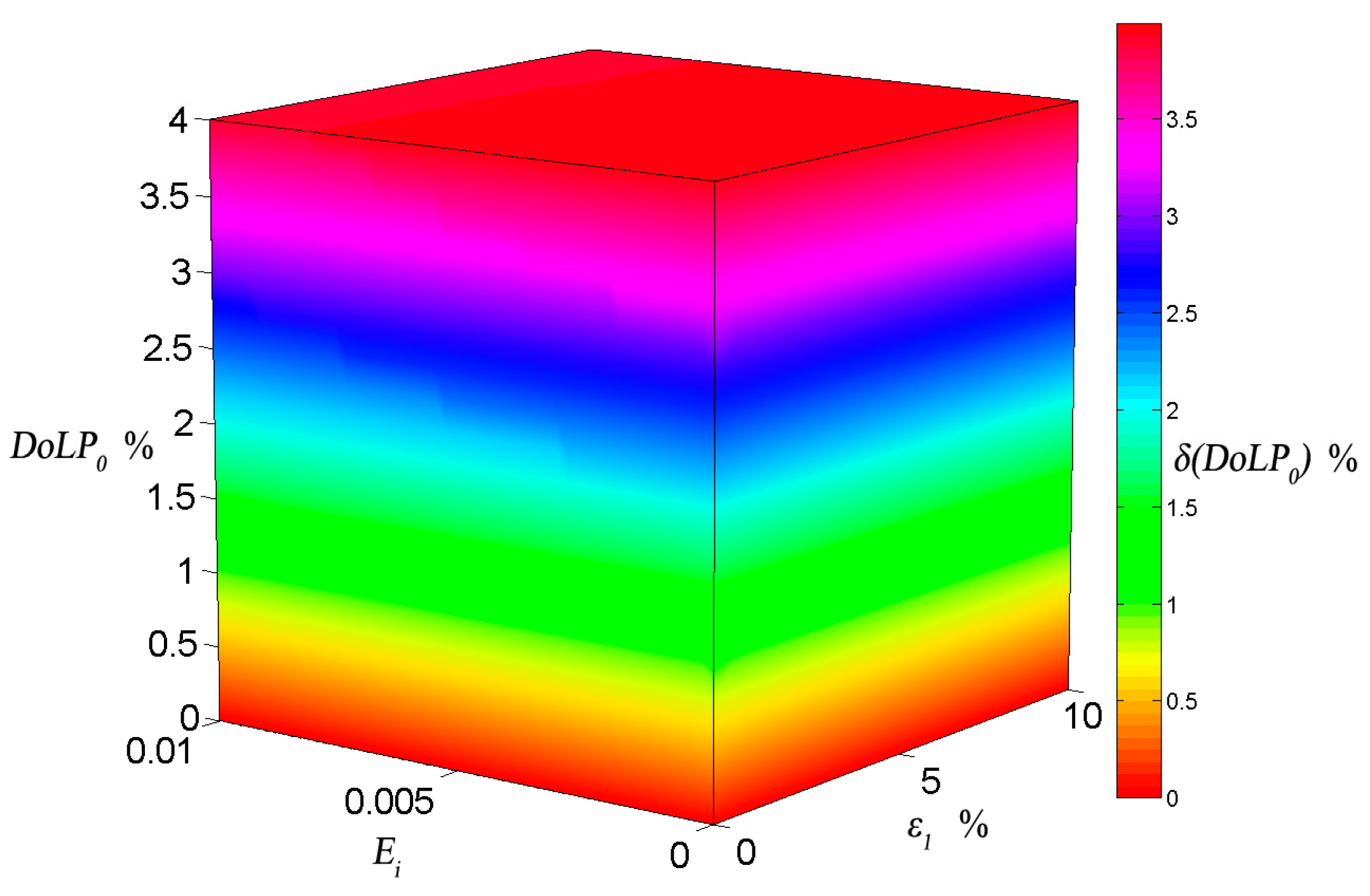
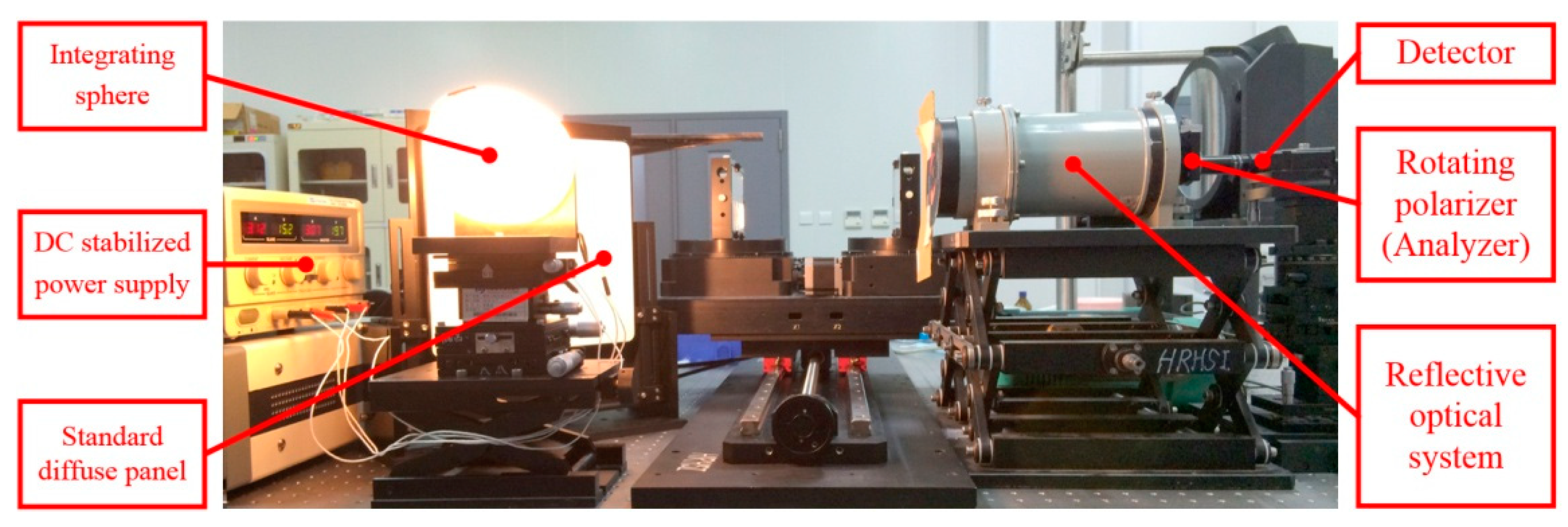

| Theoretical polarization degree (670 nm)/% | 10 | 20 | 30 |
| Relative deviation/% | 0.584 | 0.693 | 0.761 |
© 2019 by the authors. Licensee MDPI, Basel, Switzerland. This article is an open access article distributed under the terms and conditions of the Creative Commons Attribution (CC BY) license (http://creativecommons.org/licenses/by/4.0/).
Share and Cite
Liu, M.; Zhang, X.; Liu, T.; Shi, G.; Wang, L.; Li, Y. On-Orbit Polarization Calibration for Multichannel Polarimetric Camera. Appl. Sci. 2019, 9, 1424. https://doi.org/10.3390/app9071424
Liu M, Zhang X, Liu T, Shi G, Wang L, Li Y. On-Orbit Polarization Calibration for Multichannel Polarimetric Camera. Applied Sciences. 2019; 9(7):1424. https://doi.org/10.3390/app9071424
Chicago/Turabian StyleLiu, Mingxin, Xin Zhang, Tao Liu, Guangwei Shi, Lingjie Wang, and Yi Li. 2019. "On-Orbit Polarization Calibration for Multichannel Polarimetric Camera" Applied Sciences 9, no. 7: 1424. https://doi.org/10.3390/app9071424




